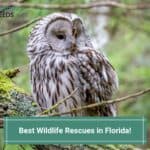When residing in a big city, you sometimes forget how close you live to nature–until a wild animal needs your help.
And if you live outside of the city limits, wildlife in distress may have a second chance at life rehabilitating and restoration of an injury, illness, or relocation in a wildlife rescue.
Finding a baby animal like a fawn, seal, or bird alone with a dead parent nearby or weeping through the woods for hours proves that a wild animal needs a rescue. Other signs that an animal may need your help include the following:
- Broken limbs or bleeding
- Featherless birds seeking ground
- Vomiting or lethargy
Other articles you would like: Maltipoo For Adoption and Adopt A Basenji Puppy.
1. Gold Country Wildlife Rescue in Auburn, CA
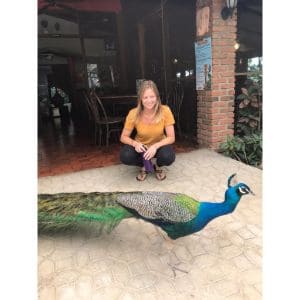
Gold Country Wildlife Rescue is a non-profit rescue and rehabilitation center permitted through the U.S. Fish & Wildlife Service and the California Department of Fish & Wildlife since 1991.
They specialize in the rescue, rehab, and release of wildlife within Placer County 365 days a year.
They pride themselves in protecting wildlife from wildfires, drought, and habitation loss as the county grows each year.
In addition to the ever-increasing dependence on medical and rehabilitative care for wildlife victims from nearby Northern California counties.
Gold Country Wildlife Rescue cares for animals on their 15-acre property across eight modular units reserved for emergency wildlife veterinary care, rehabilitation, and administration space for staff, interns, and volunteers.
Gold Country Wildlife Rescue in Auburn Details:
- Location: Auburn, CA
- Phone Number: 530-885-0862
- Website: Gold Country Wildlife Rescue
2. Wetlands and Wildlife Care Center of Orange County

Huntington Beach is home to Southern California’s most beautiful wetland and dry land wildlife that sit at the brink of survival due to coastal pollution and human interactions servicing the Orange County area.
Since the crude oil spill leaked into Huntington Beach’s wetland grazing ground in 1990, Wetlands and Wildlife Care Center (WWCC) has served as a haven for wildlife relocation and injury rehabilitation.
The WWCC works with certified volunteers, veterinarians, wildlife technicians, and the California Department of Fish and Game Office of Spill Prevention and Response to offer support to over 400 wildlife animals at a time.
The facility is open for tours, volunteer opportunities, and donations.
Wetlands and Wildlife Care Center of Orange County Details:
- Location: Huntingtin Beach, CA
- Phone Number: 714-374-5587
- Website: Wetlands and Wildlife Care Center
3. Sonoma County Wildlife Rescue
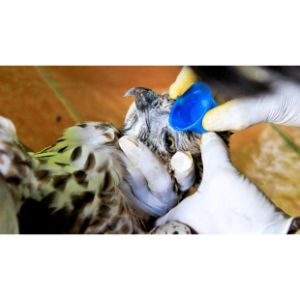
The Sonoma County Wildlife Rescue is renowned for rehabilitation wild mammals and raptors in the Sonoma Country area.
They have a permit through the U.S. Department of Agriculture, the California Department of Fish and Wildlife, and the U.S. Department of Fish and Wildlife Conservation Agency.
The trained staff and volunteers at Sonoma County Wildlife Rescue rehab wildlife local to the area, such as raccoons, coyotes, eagles, and owls.
Their trusted veterinarians provide rescues with the best care for release, and they return the rescued wildlife to their found location. However, animals not suitable for release find kind homes for the rest of their lives.
Sonoma County Wildlife Rescue Details:
- Location: Petaluma, CA
- Phone Number: 707-992-0274
- Website: The Sonoma County Wildlife Rescue
4. Shasta Wildlife Rescue in Redding

Each year over 100 wildlife animals from Shasta County and surrounding areas of northern California have found refuge at Shasta Wildlife Rescue and Rehabilitation (SWRR) since 1979.
Their volunteers are available year-round to service injured, orphaned, and ill bird and mammal species.
Although they are licensed by the California Department of Fish and Wildlife and the U.S. Fish and Wildlife Service, seeking support from animal control authorities allows them to treat wildlife that experience trauma and release them back into the wild in good health.
And when it comes to treating hazards, Shasta Wildlife Rescue armors itself with professional rehabilitation methods and educational programs to recruit community support, non-invasive wildlife education, and sponsorships that protect wildlife.
Shasta Wildlife Rescue in Redding Details:
- Location: Anderson, CA
- Phone Number: 530-365-9453
- Website: Shasta Wildlife Rescue and Rehabilitation
5. California Wildlife Center in Santa Monica, CA
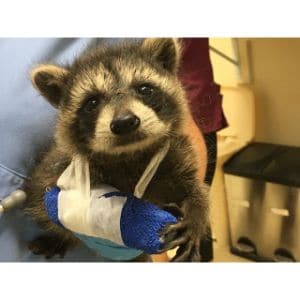
Since 1998, the old ranger station snuggled inside the Santa Monica Mountains has been a safe space of refuge for wildlife living across 6,000 miles of mountains, beaches, and human cohabitation in Los Angeles and Southern Ventura County.
And it’s the only refuge in L.A. county with a full-time veterinarian facility.
The staff at the California Wildlife Center understands the adversity that land and marine wildlife face; that’s why they provide refuge year-round to over 170 animal species of fawn, coyote, ravens, and songbirds.
In addition, they’ve trained volunteers in wildlife rehabilitation and medicine practices to support the growing need for guardians of wildlife protection.
Underneath their advanced rehabilitation facilities, the California Wildlife Center remains focused and disciplined to rescue and rehab injured, orphaned, and sick native wildlife that is a part of the community as their urban and suburban human neighbors.
California Wildlife Center in Santa Monica Details:
- Location: Malibu, CA
- Phone Number: 310-458-9453
- Website: The California Wildlife Center
6. SPCA Wildlife Rescue and Rehabilitation Center of Monterey County
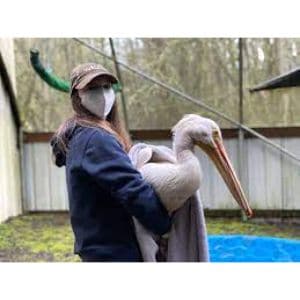
Despite the flourishing wildlife that roams Monterey County, the SPCA Wildlife Rescue and Rehabilitation is the only rehabilitation center that treats wildlife.
In addition, it offers wildlife adoption for lost or surrendered exotic animals in Monterey County.
The rescue shelters over 12,000 animals a year without discrimination, providing exotic animals, dogs, cats, horses, barn animals, and wildlife with:
- Rescue
- Shelter
- Rehabilitation
- Rehoming
In addition, the SPCA uniquely allows you to adopt wildlife and exotic pets. If you have the right living circumstances, the SPCA can pair you with adoptable wildlife options to help a parrot, turtle, or snake find a loving home outside the rehabilitation center.
Since 1905, the SPCA has protected animals from suffering and neglects from all species, age, and health condition. And they do not practice euthanasia unless medical intervention and severe behavior hinder adopting wildlife.
SPCA Wildlife Rescue and Rehabilitation Center of Monterey County Details:
- Location: Salinas, CA
- Phone Number: 831-373-2631
- Website: Society for the Prevent of Cruelty to Animals
7. Suisun Wildlife Center for Solano County

Suisun Wildlife Center (SWC) is a non-profit volunteer organization that assists over 300 species of birds, mammals, and reptiles injured and orphaned wildlife in the largest brackish march on the west coast in Solano Country since 1977.
However, they do not rescue farm animals and wildlife under California State Fish and Game regulations.
The SWC is associated with the Suisun Marsh Natural History Association and offers on-site environmental and wildlife education programs for small and large groups.
Underneath the John Muir Conservation Award, the SWC continues its efforts to rescue and release wildlife back into the wild affected by human cohabitation.
Suisun Wildlife Center for Solano County Details:
- Location: Suisun City, CA
- Phone Number: 707-429-4295
- Website: Suisun Wildlife Center (SWC
8. Rose Wolf Wildlife Rescue and Rehabilitation Center in Sonora, CA

Rose Wolf is licensed by the California State Department of Fish and Wildlife to rescue, care, and rehabilitate over 100 injured and orphaned wildlife each year on a 10-acre Jamestown-Sonora facility serving Tuolumne County.
In addition, they are a non-profit volunteer organization with in-house veterinary care. They have specialized in rescue and release methods for small mammals such as fawns, foxes, raccoons, rabbits, opossums, and squirrels for over 25 years.
Rose Wolf Wildlife Rescue and Rehabilitation Center Details:
- Location: Sonora, CA
- Phone Number: 209-206-6243
- Website: Rose Wolf Wildlife Rescue
9. Wildlife Care Association in Sacramento

The Wildlife Care Association (WCA) rescues and rehabs over 7,000 sick, orphaned, and injured wildlife with premium medical and rehabilitative services alongside support from local veterinary clinics and zoos yearly.
They give wildlife a second chance at life by rescuing and releasing injured wildlife, including:
- Young songbirds
- Raptors
- Squirrels
- Bats
- Fawns
- Opossums
- Rabbits
- Snakes
- Amphibians
However, the WCA does not believe in disturbing an active nest. Therefore, they do not accept neglected bird eggs. Instead, they recommend contacting the California State Department of Fish and Wildlife.
WCA offers internship and volunteer opportunities for people who desire to work closely with wildlife and the environment.
In addition, they provide community education to keep wild animals wild– including the danger of human-transmissible diseases, the legality of housing wild animals without permits, and the physiological damages that occur during a rescue.
Wildlife Care Association Details:
- Location: Sacramento
- Website: The Wildlife Care Association
10. Yggdrasil Urban Wildlife Rescue
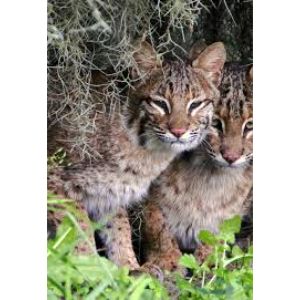
Since 2001, the Yggdrasil Urban Wildlife Rescue (YUWR) has rehabilitated orphaned and injured wildlife near San Francisco Bay Area urban areas.
Although inner cities may not seem to have much wildlife, they are home to urban-city mammals such as baby raccoons, opossums, squirrels, fawns, jackrabbits, songbirds, and hummingbirds.
In addition, some of the adoptable rescues that do not reach release status may be available for adoption for the right home.
However, they do not rehab non-native species such as pigeons, skunks, and waterbirds.
Instead, the YUWR offers education to raise awareness about urban wildlife that cohabitates with urban lifestyles. In addition, they are a non-profit volunteer non-profit organization.
Yggdrasil Urban Wildlife Rescue Details:
- Location: San Francisco, CA
- Phone Number: 510-421-9897
- Website: Yggdrasil Urban Wildlife Rescue
Before You Contact a Wildlife Rescue

Follow these tips before contacting a wildlife rescue in California:
- Double-check that the wildlife rescue has a wildlife rehabilitation permit to ensure the rescue is in good legal hands
- Contact the wildlife rescue to find out the wildlife species they can treat at their facility.
- Contact your veterinary clinic or the California Department of Fish and Wildlife for immediate care if you cannot reach a wildlife rehabilitator.
Conclusion For “Best Wildlife Rescues in California”
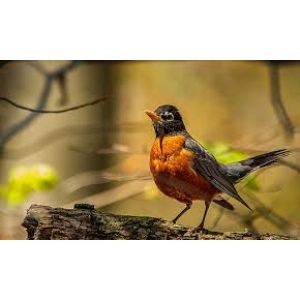
California has a delicate balance of wildlife and human habitat that wildlife rescues can preserve for a healthier life. As the contact between them grows and wildlife habitat changes, wildlife deserves a second chance at life.
So, if you see injured, sick, or orphaned wildlife, reach out to your local wild rescue and rehabilitation center to discover the best advice and methods for handling wildlife.
You will also like:
For more information about Wildlife, check out the video down below:



